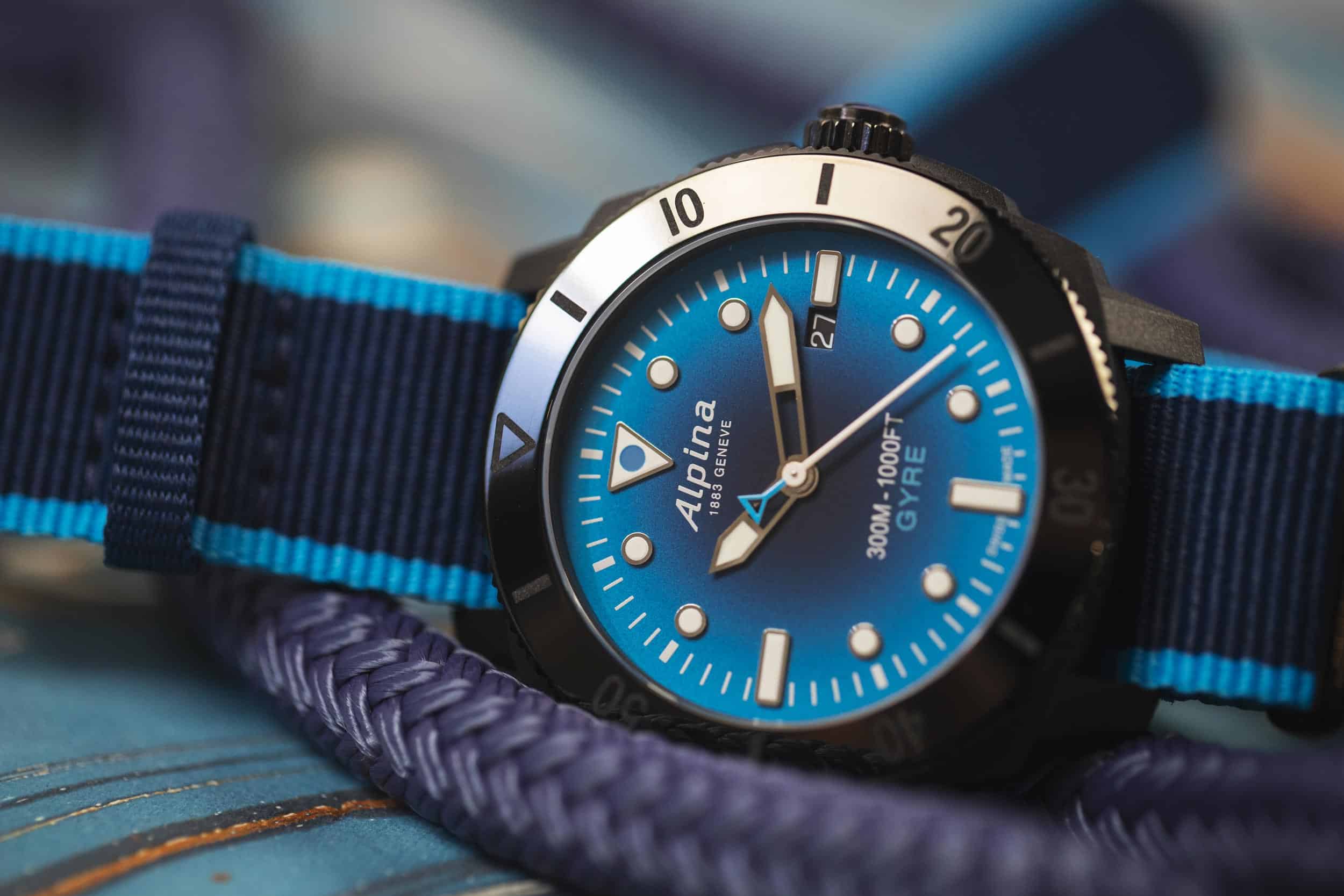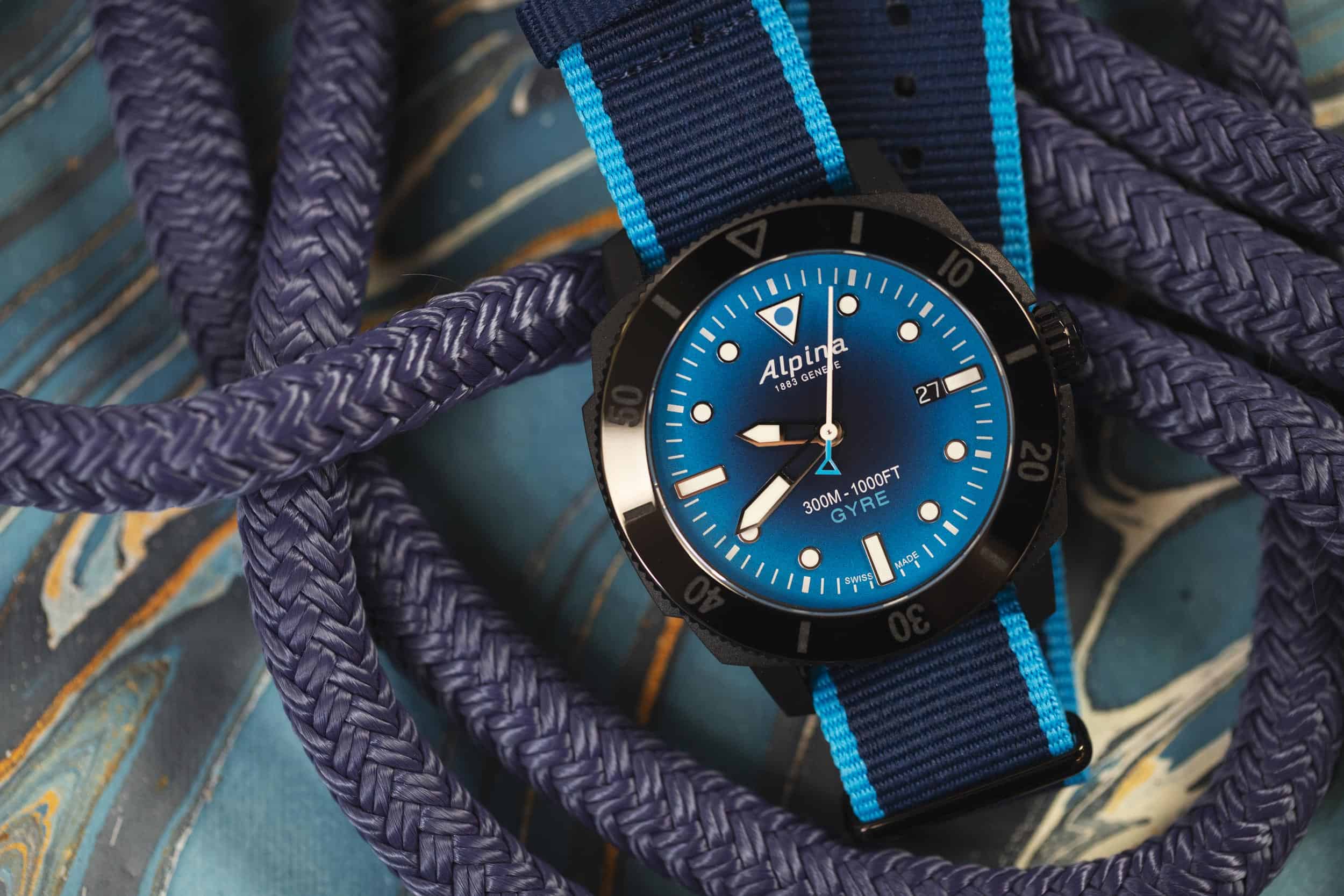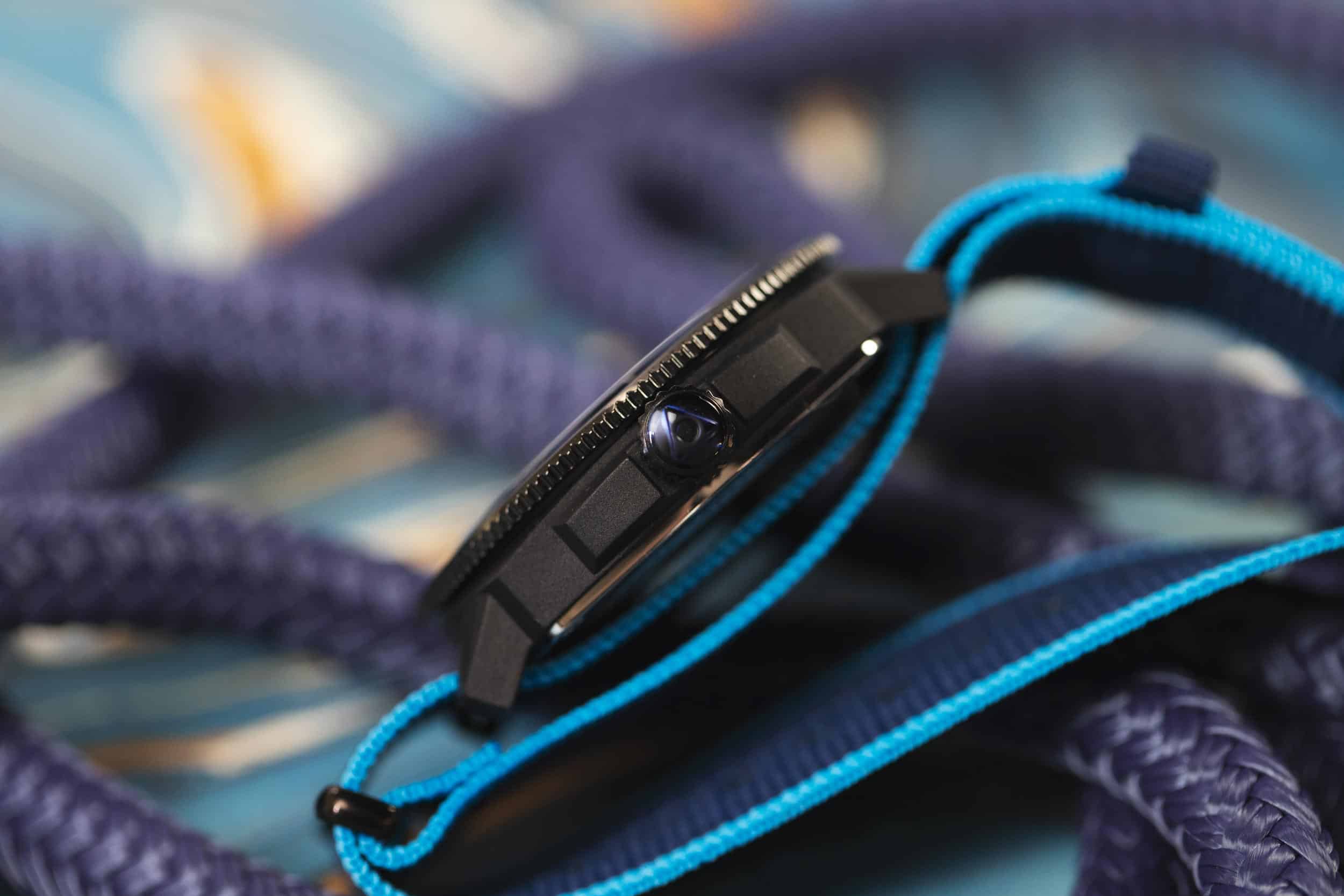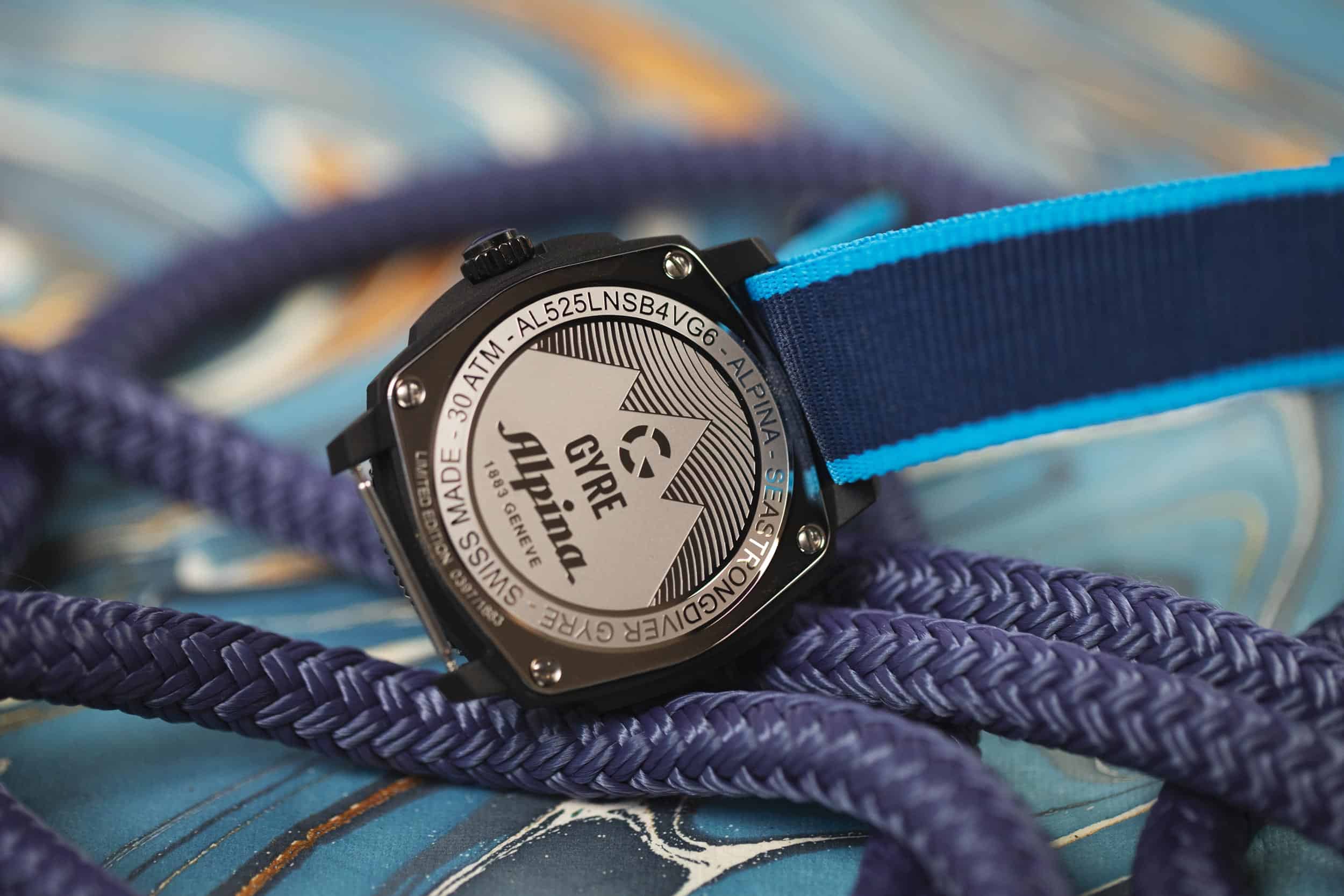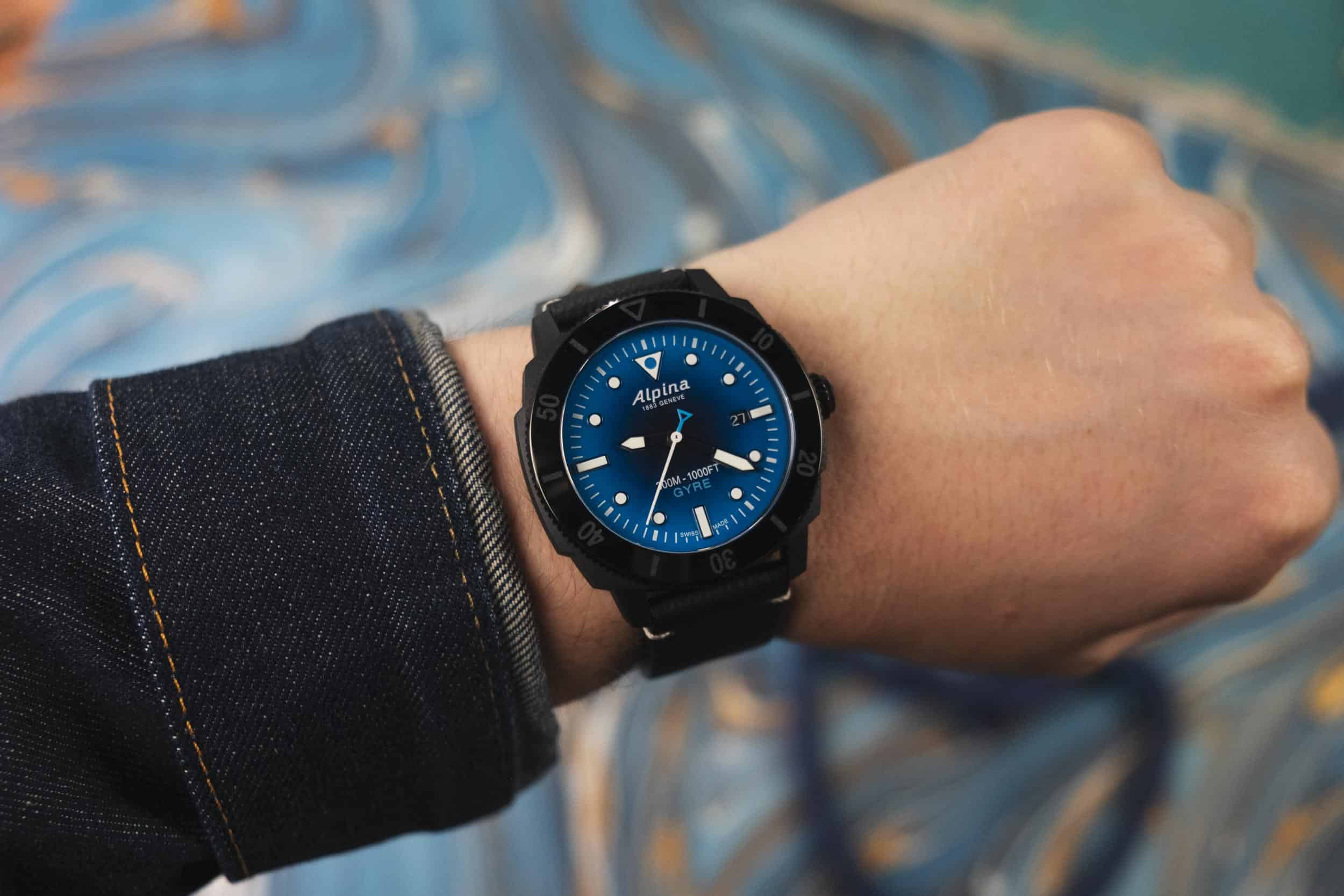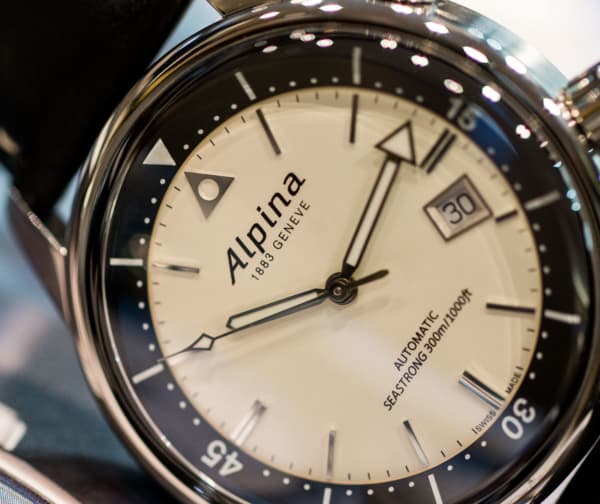Founded in 1883, Alpina has been making Swiss watches for nearly 140 years and, throughout that period, their focus has been on making robust timepieces for the outdoors. Today, one of the ways Alpina continues that tradition is through its partnership with the National Parks Foundation. Through this partnership, Alpina supports the work of the Foundation to “protect and enhance America’s national parks for present and future generations.”
It’s with this commitment to sustainability and preserving the outdoors in mind that Alpina releases products like the Seastrong Diver Gyre Automatic, a unique 300-meter dive watch with an innovative case construction designed to reduce waste without sacrificing performance. The Gyre’s case has been manufactured from 70% plastic debris collected from fishing nets in the Indian Ocean. The remaining 30% of the case is made of fiberglass, adding rigidity and making it just as suitable for diving as a watch made from traditional materials.
The Gyre comes fitted on a textile strap made from recycled plastic bottles and even its packaging is made from recycled materials. We had the opportunity to ask Alpina’s Brand Director, Oliver van Lanschot Hubrecht, a few questions about the Seastrong Gyre, how it was made, and what Alpina learned along the way.









 Featured Videos
Featured Videos




